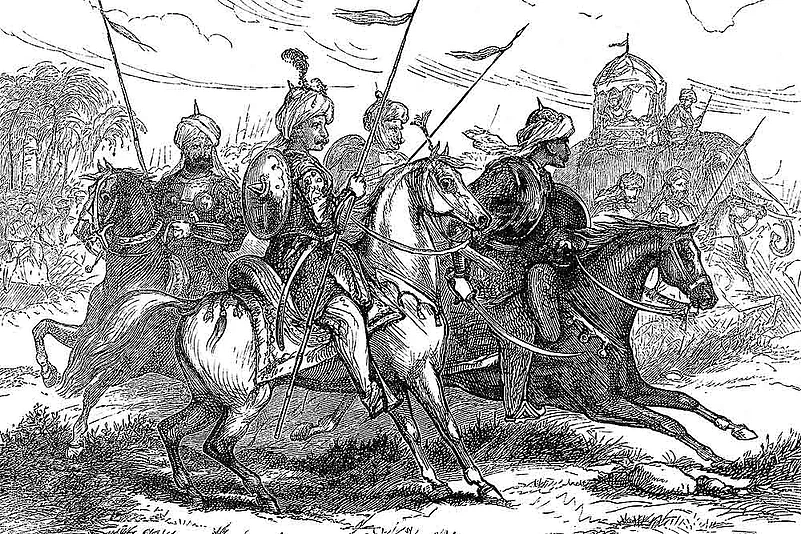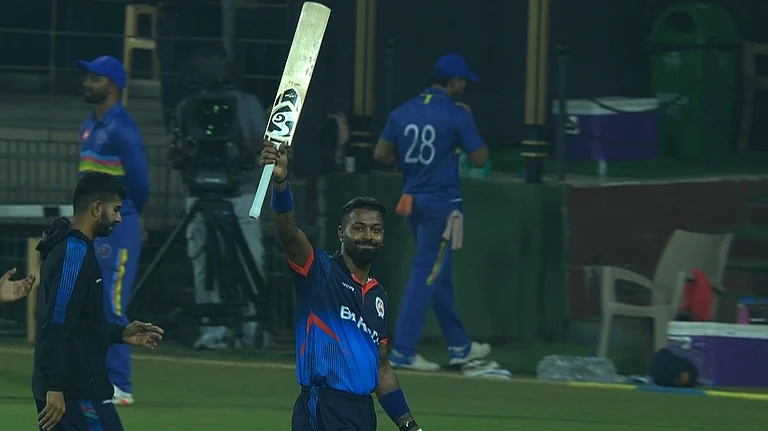It was January 18, 1943. Independence was imminent and Pakistan was but a mischievous slogan. Dr. B.R. Ambedkar had been invited to address a gathering assembled at Pune to remember the 101st birthday of the great jurist and nationalist, Mahadev Govind Ranade. The Quit India Movement of August 1942 had just been put down. Ambedkar spoke out his mind. Gandhi and Jinnah had made a mess of Indian politics by resorting to politics based on community identities, he said, much like the bad old days when the Peshwa promoted caste and community, privileged the rich and powerful, while people suffered widespread misgovernance that was made worse by the depredations of roving bands of Pindaris. Ambedkar warned his audience that India needed politics that was based on the interests of the nation and not a narrow, specific community. He reminded the gathering that people had breathed a sigh of relief at the defeat of the Peshwas and their cursed rule. So bad was the rule of the Peshwa, Ambedkar explained, that people were even willing to go with the English.
That last, of course, was both an over-statement as well as an under-statement. It was an over-statement in two ways. One, Indians never fully approved of British rule. Two, once the British settled down to rule they became just as casteist as Indians. So much so that in 1892 they even placed a ban on the Mahars entering the army. A ban that, Ambedkar would plead, needed to be removed to give equal opportunity for all to grow.
It was an understatement in so far as the fact was that Indians were willing to soldier for anyone, irrespective of caste, religion or race. Soldiering, in fact, was an important add-on occupation in India. Every Indian carried a weapon and was willing to fight with anyone and for anyone. To join an army all that one needed to do was to bring one’s own personal weapons and kit along with a tattoo—a pony. The pay, essentially a retainer, was good. A victory could on occasion result in a handsome bonus in the form of a share in the loot. The only negative was that one needed to take care that one’s horse and kit were not damaged in such an adventure. Which meant that a battle, for most part, needed to be one of wits rather than a physical confrontation. Rajas, maharajas and badshahs who could demonstrate an ability to win with their wits were preferred as masters to those who required their soldiers to kill or be killed.
Military leaders, at least in the Maratha territories, ensured that soldiers were always kept in arrears of pay so that they did not leave service before the adventure on which the leader had embarked was over. Typically, a soldier would end up getting paid only for ten or less months in a year, if at all that. In extreme cases of arrears troops would simply refuse to fight till past wages had been settled. Doing dharna to get your military pay was a time-honoured practice.
In the 18th century, a foot soldier working for an Indian raja could start at Rs 6-12 per month. Often, these were gosains, mendicants—essentially the itinerant riff-raff of pre-modern India. A soldier with a horse and some skill with the sword could get up to Rs 50 a month. With the collapse of the Mughal empire and the imploding rule of the Marathas, local rajas upped salaries in order to attract more soldiers to help them out in the free-for-all that followed. An infantryman in the Deccan could now hope for Rs 9 a month. Some Arabs—exotic foreigners were appreciated even then—received Rs 12. A Kotwal (police chief) of Poona during Peshwai rule was a ‘habshi’.
The British East India Company eagerly dipped into this melange of Indian society. Like all other rulers, including the Peshwa, they hired anyone and everyone who was willing to fight for them. Caste or religion did not matter. Like in the Peshwa’s army, the armies of the East India Company too had Mahars, Dhangars, Kunbis, Marathas, Rajputs, Muslims as well as Christians and Jews as soldiers. The Holkars ruling at Indore were from the Dhangar (shepherd) community. Scindias, ruling from Gwalior, originated as village patils. Similarly, the Gaekwads based at Baroda could be anything—Shudra, Brahmin, Vaishya or Kshatriya.
No one really cared. At a pinch, if it was needed, one could always hire a Brahmin to set up a good lineage, preferably going back to one of the great sages of Vedic times or the sun/moon god. Tribals, too, freely participated in the armies and also ruled large tracts of land. Shivaji’s army was made up of Ramoshis—essentially forest and hill dwellers known for their ability as thieves and dacoits.
The armies of the Company were different from those of the Indians in one important respect. The Company, by the early 19th century when it had reduced all Marathas to a subsidiary status, insisted that its soldiers be accoutred in clothes given to them by the Company and carry weapons issued by the Company. This was in line with the changes in military organisation in contemporary Europe.
In the Deccan it had the unexpected result of opening up fresh opportunities in soldiering for those who could not afford a personal horse, weapons or clothes. Little wonder that when in September-October 1817, Captain Staunton set about raising a troop of soldiers at Shirur to chase and reduce Pindari freebooters, he was able to quickly get 500 foot soldiers and 300 irregular horse to work for the Company’s army.

Lt Pattinson recaptures a gun lost during the Battle of Koregaon
The East India Company’s army had already kicked out the Peshwa from Pune and occupied his house when the skirmish at Koregaon happened on January 1, 1818. The Peshwa and his troops had not yet realised that they had lost their empire permanently. Thomas Munro, the Scotsman who was assigned the rank of brigadier when he requested to be part of the war against the Pindaris, noticed that most of the soldiers in the Peshwa’s army were the domestic labourers of local farmers for whom breeding horses for the army was an important source of revenue. The farmer would supply horse and horseman to the army. After the military adventure everyone would go back to their main occupation, either tending the land or working as an artisan.
Arabs were different. They soldiered for a living. Enhanced viciousness was their brand value. Some 3,000 of them accompanied the Peshwa as he ran from the British. Camping on the left bank of the river Bhima and wondering how to get Poona back, the Peshwa noticed that a small troop of the Company army had just reached the village of Koregaon across the river. Hoping for easy game, his Arab horsemen eagerly launched into a frontal attack.
This was the same troop that Captain Staunton had raised at Shirur three months ago. It had been supplemented by two guns and an accompanying section of two dozen European soldiers of the Madras Army. Staunton had force-marched his troops through the night from Shirur. This march of some 60 kms was undertaken to reach Pune in order to supplement its defence. The planned halt at Koregaon was to rest and replenish their water supply. The Company’s soldiers at this time did not carry personal canteens or water supplies but were supplied with water by bhishti boys carrying bladders made of goat skin. Getting water from the Bhima, though, was impossible. The boys espied the Peshwa’s camp on the other side, dominating the river. The rest of the troop had just enough time to hide themselves before an attack started. The two guns were hastily placed for use. One of them was quickly lost to the attacking Arabs. The temple where the Company soldiers took position was soon lost, as was the neighbouring dharamshala. One of the lieutenants commanding a gun was beheaded by the Arabs. As the soldiers began to lose heart, Staunton showed them the headless body of the lieutenant and warned that this would be their fate too, should they fall in the hands of the Arabs. The warning seemed to work. The soldiers ignored their tiredness and thirst and began to defend themselves in earnest. As the day wore on, bodies piled up in the lanes and bylanes. By sundown, almost a hundred Company troops lay dead, another 75 were wounded. Staunton estimated that 600 of the Arabs had died. But there were enough alive to annihilate his troop, were they to attack again. He quickly planned a getaway. The idea of reaching Pune was abandoned. By the next morning he was moving back to Shirur. A week later, on January 8, 1818, Colonel Cunningham, commandant of the Auxiliary Horse at Pune, wrote to Staunton, congratulating him on his “escape from Koregaum”.
Clearly, this was no victory for the English. It wasn’t one for the Peshwa either.
All through the day, he had observed the battle of Koregaon from the other side of the river, sitting on high ground under a sun-shade. The Peshwa had constantly chided the commanders of his army for not being able to quickly defeat a small unit of the Company. At nightfall, he got news of a larger body of Company soldiers marching in his pursuit and decided to move away from Koregaon.
Now, the English set up a cantonment at Koregaon. Three decades later, in 1851, a victory pillar was erected here to remember, what had transmogrified into, “the valorous defence of Koregaon”. Each New Year, the army would organise a small ceremony here. “A march and a nautch”, as the papers reported it. It was at one such ceremony in 1927 that Ambedkar pointed out that apart from 30 European names INScribed on the pillar, another 28 names seemed to be of Marathas, Rajputs, Arabs and Jews. More important for him, however, were the 22 names that were clearly of Mahars. For him, this underscored the bravery of this people who were otherwise relegated to the position of a lowly dogsbody in every village and correspondingly declared untouchable by Brahmins like the Peshwas. “Disenfranchised from society”, as Ambedkar would put it. Yet capable enough to help the British defeat the Peshwa.
By now, Ambedkar had become a person of some consequence. A nominated Member of the Legislative Council of the Presidency of Bombay, he was fighting for the right of the Mahars to be given equal status as ‘Hindu’ in the toxic caste-riven society of western Maharashtra. The pillar at Koregaon to him became a symbol of Mahar bravery and upliftment. It represented the possibility of, Ambedkar would say, ‘enfranchising’ the Mahar.
(The author is professor, Department of History, Panjab University)


























